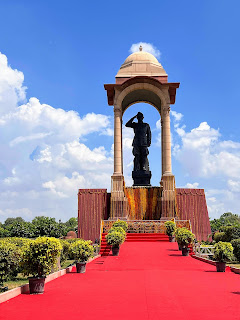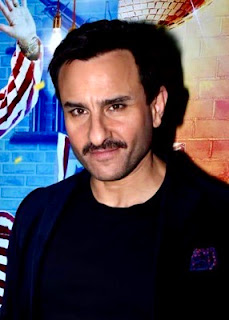On this significant day, January 25, 2025, we mark two important milestones: The 75th anniversary of the founding of the Election Commission of India (ECI), which was founded on 25 January 1950 and the 14th National Voters Day, declared o 25 January 2011, to commemorate the diamond jubilee of the founding of Election of India. These commemorations not only celebrate the rich legacy of the ECI but also highlight the enduring spirit of democracy of India, where every citizen is empowered with the right to vote.
The elections in India, more particularly the parliamentary elections, are considered as the greatest of global spectacle that herald the extraordinary democratic traditions of independent India. Last year 18th Parliamentary elections were successfully completed by the Election Commission of India which uses technology and faceless hundreds of thousands of foot soldiers of the Election Commission of India who work tirelessly towards making the Himalayan task of conducting elections in India grand success time after time and election after elections. Democracy in India has gained from strength to strength, ever since the foundation of the Election Commission of India, and has made much progress over the decades. When we attained independence and declared ourselves Republic on 26 January 1950, our erstwhile rulers the British and the rest of the world were highly cynical about our survival, let alone our democracy. From the first elections in 1951-52 to the recent 18th parliamentary election in 2024, India has come a long way and our democracy has grown from strength and the world now treats Indian democracy as a triumphant role model. As we cherish the much lauded Indian Democracy, which we cherish so dearly, today is a special day for us to celebrate the 75th anniversary of the Election Commission of India, which helps us in conducting free and fair elections in India.
The Founding of the Election Commission
The
Election Commission of India was established on January 25, 1950, a day before
India formally became a Republic – 26 January 1950). This autonomous
constitutional authority was tasked with overseeing free and fair elections, a
cornerstone of democracy. As the guardian of the electoral process, the ECI has
upheld the principle of universal adult suffrage, ensuring that every eligible
Indian, irrespective of caste, creed, gender, or economic status, has a voice
in shaping the nation’s future.
Central to the beauty and vibrancy of the Indian democracy are the Indian electorates - the rich and mighty, the powerful and powerless, the poor and the insignificant, the lettered and unlettered, sheltered and unsheltered, the males, females and the transgender’s, the believers and non-believers, Hindus, Muslims, Parsis, Sikhs, Christians, Jains, Buddhists, religious and non-religious, young, middle aged, old and the very old - all standing as equals, each rubbing shoulders with one another, in the true spirit of equality and humanity first, who make our democracy thrive by using the universal adult suffrage, which we enjoy by virtue of our Constitution.
One can appreciate the magnitude of the challenge that the Election Commission of India and the founder Chief Election Commissioner, Mr Sukumar Sen, faced when they had to undertake this mission in a country which was left behind in dire straits - as articulated by Shashi Tharoor in his book, Era of Darkness: The British Empire in India – after centuries of colonial rule and exploitation by the British. Therefore, it was no wonder that there was no optimism in the future for Indian democracy when we attained independence.
What the odds were for Election Commission of India for making India succeed as a thriving democracy, when we attained independence, can best be seen when we juxtapose Indian democracy as a start-up company in 1947 and the Election Commission as its CEO. Not even the most adventurous and risk taking venture capitalists would have considered investing in the Indian democracy and the ECI. More so since there were many dooms day predictions made by the British, an evidence of which can be best seen from the last British commander in chief of the Indian Army, Gen. Claude Auchinleck. He wrote “The Sikhs may try to set up a separate regime. I think they probably will and that will be only a start of a general decentralization and break-up of the idea that India is a country, whereas it is a subcontinent as varied as Europe. The Punjabi is as different from a Madrassi as a Scot is from an Italian. The British tried to consolidate it but achieved nothing permanent. No one can make a nation out of a continent of many nations.”
Gen. Claude Auchinleck was not the sole voice to make such dooms day prediction for Indian democracy. Dooms day predictions for India and Indian democracy were dime a dozen in the early years of independence. India could not survive as a single nation, was one common observations by most western observers, let alone becoming a successful democracy. One of the former British official, who witnessed the first general elections in India in 1952 wrote “a future and more enlightened age will view with astonishment the absurd farce of recording the votes of millions of illiterate people.” From such negativity and dooms day predictions, Indian democracy has passed through periods of trials and tribulations to emerge triumphant and today when India is commemorating the Platinum Jubilee of the Election Commission of India and the fifteenth National Voters Day, while commending the ECI and patting us – the electorates - on our back, we must resolve to place on records our profound appreciation to the ECI, and all the former Election Commissioners and innumerable other stakeholders who have helped in the thriving of our democracy. We must also spread the message of the importance of voting in a democracy and each of us must go out to exercise our democratic rights without fear or favour.
The First General Election: A Monumental Feat.
India's
first general election was held in an era devoid of modern technology and
infrastructure. Voter education was critical, as millions of Indians were not
only uneducated but were unfamiliar with the democratic process. Symbols were
introduced to represent political parties, making it easier for illiterate
voters to identify their preferred candidates. The election was conducted in
phases, ensuring every Indian had the opportunity to participate. More
importantly Godrej company was selected to manufacture special ballot boxes,
which had to be safe and secure. The process of manufacturing such huge number
of ballet boxes was in itself a herculean task and the Indian industry – Godrej
– lived up to its expectations and they worked full steam 24x7 converting their
entire facilities in Vikhroli to manufacture the required ballot boxes. Every
aspect of the fist election in 1951-52 was heralded as some kind of a miracle
made possible by innumerable stakeholders led by the Election Commission of
India.
The success of the first general election, with innumerable handicaps, laid the foundation for a robust electoral framework, inspiring confidence in India's democratic institutions, particularly the ECI.
Over the past seven decades, the Election Commission has conducted 18 Lok Sabha elections, innumerable State Legislative Assemblies – which also includes the forthcoming Delhi elections - and elections for the office of the President and Vice President, among others. ECI has introduced technological advancements like Electronic Voting Machines (EVMs) and Voter Verifiable Paper Audit Trails (VVPATs), ensuring transparency and efficiency. Despite occasional allegations and challenges posed by political parties, the ECI has remained steadfast in its impartiality and integrity. It has successfully upheld the democratic fabric of the nation, conducting elections in the world's largest democracy with precision and fairness. Notwithstanding several vituperative attacks from political parties and others making countless allegations against the ECI and its heads, the ECI and the heads of ECI (Election Commissioners) have all done a remarkable job of making the Indian democracy thrive and be an exemplar to the world.
Although there have been several unheralded heads of the ECI – The CEC and Election Commissioners – one of the names stand out besides the founder Election Commissioner, Mr Sukumar Das and that is TN Seshan.
Transformative Leadership of T.N. Seshan
One of
the most transformative chapters in the history of the ECI was under the
leadership of T.N. Seshan. Appointed as the Chief Election Commissioner in
1990, Seshan revolutionized the electoral process, emphasizing the need for
free and fair elections. He introduced strict measures to curb malpractices,
enforced the Model Code of Conduct rigorously, and empowered the ECI to act
decisively against electoral corruption.
Seshan’s legacy continues to inspire confidence in the ECI’s commitment to democracy. You can read more about his impact on my blog post tribute which I had paid to T.N. Seshan
https://khened.blogspot.com/2020/11/remembering-t-n-seshan-on-his-first.html
National
Voters Day: A Celebration of Democracy
The Government of India declared January 25 as National Voters Day in 2011 to commemorate the ECI’s foundation and encourage greater voter participation. The day serves as a reminder of the power of the ballot and the responsibility of every citizen to exercise their franchise. It is a celebration of the inclusivity that defines Indian democracy, where the principle of “one person, one vote” empowers over 900 million plus voters today.
India’s Unique Electoral System
India's democratic process is unparalleled, given its size, diversity, and complexity. The ECI ensures that every eligible citizen, from the remotest villages to bustling metropolises, has an equal say in shaping the country’s destiny. It is a testament to the resilience of Indian democracy that elections are conducted peacefully, even in challenging circumstances, reaffirming faith in the electoral process.
As we celebrate 75 years of the Election Commission of India, let us reflect on the journey of this institution, which has steadfastly upheld the democratic ideals of the Constitution. The ECI’s commitment to impartiality, innovation, and inclusivity has ensured that the voice of every Indian is heard.
On this National Voters Day, let us pledge to uphold the spirit of democracy by participating actively in elections and encouraging others to do the same. The legacy of the Election Commission reminds us that democracy thrives not just on the strength of its institutions but also on the active engagement of its citizens.
India’s democracy is vibrant, resilient, and inclusive, and the Election Commission of India stands as its unwavering custodian, let us hold this institution reverentially, and overlook some odd aberration failures of the institution.






















